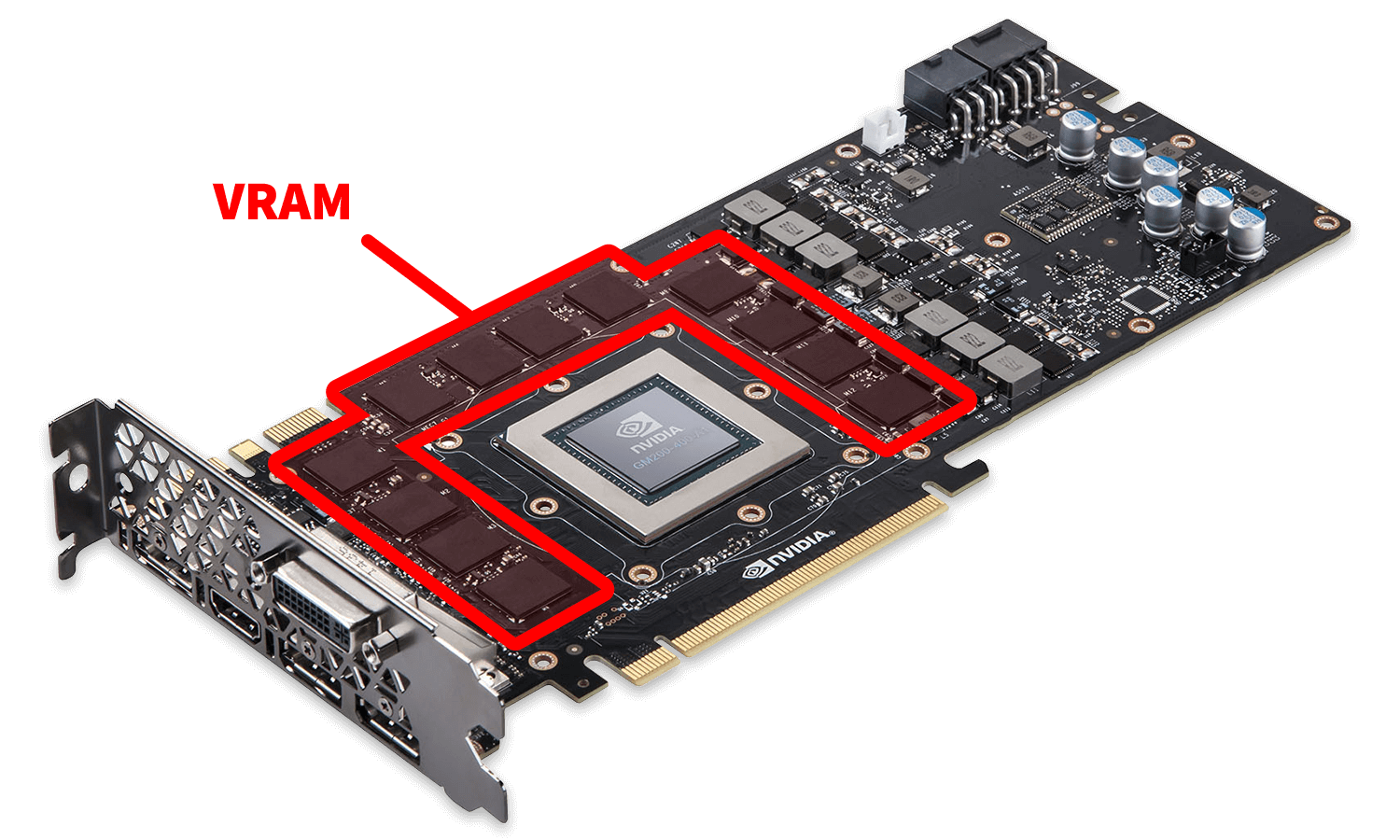VRAM
Stands for "Video Random Access Memory."
VRAM is dedicated, high-speed memory used by a computer's GPU. It temporarily stores data for the GPU to access, including textures, shaders, and the frame buffer. VRAM is connected directly to the GPU on the graphics card, which allows the GPU to access VRAM at higher speeds and with less latency than system RAM; however, being integrated means that VRAM cannot be upgraded without replacing the entire graphics card.
Different GPU and video-related tasks use VRAM in their own ways. Video games and 3D modeling/animation applications use VRAM to store texture and polygon information during image rendering. Video editing applications use VRAM to store video frame data, allowing editors to composite multiple video layers and render motion graphics and special effects. Graphic design and CAD applications typically have lower requirements than 3D and video applications but still benefit from enough fast VRAM to create a smooth and responsive frame buffer, particularly when using multiple high-resolution monitors.

Modern GPUs use a special type of memory for VRAM called Graphics Double Data Rate Synchronous Dynamic Random Access Memory, or GDDR SDRAM. Each generation of GDDR SDRAM increases the available memory bandwidth to allow higher data transfer rates. The current standard (as of 2023) is GDDR6, which supports data transfer rates between 112 GB/s and 144 GB/s.
NOTE: The acronym VRAM was formerly used specifically for dual-ported video RAM, which was used for frame buffers in video cards in the 1990s and is now obsolete. The term now refers broadly to dedicated video memory on a graphics card.
 Test Your Knowledge
Test Your Knowledge